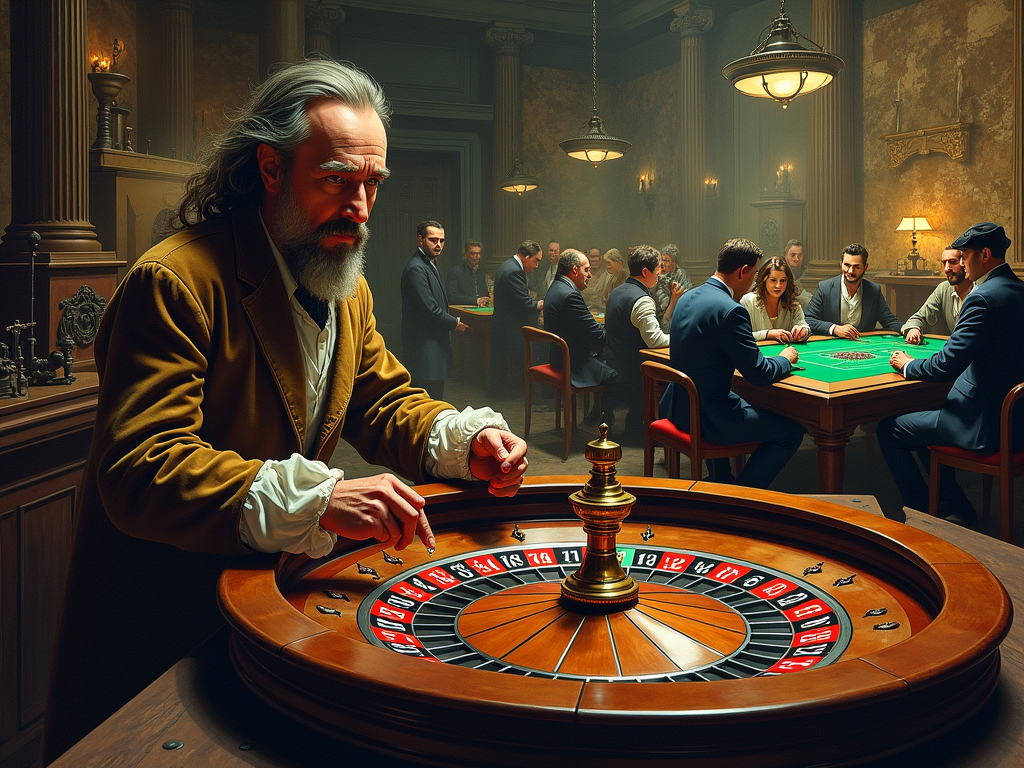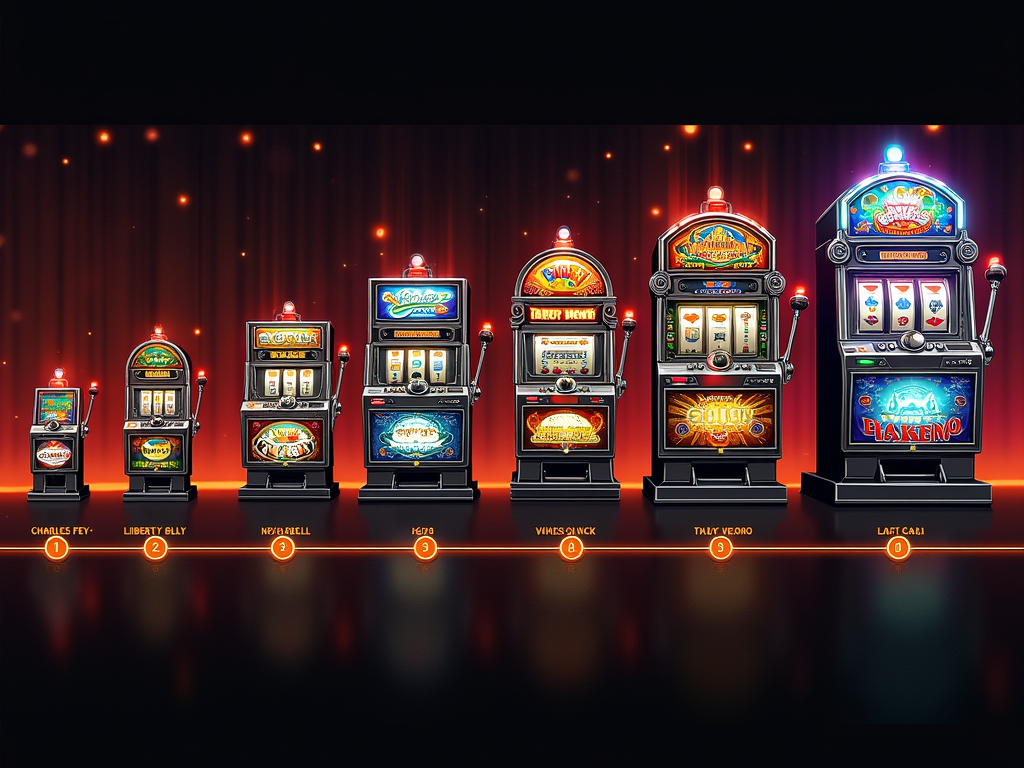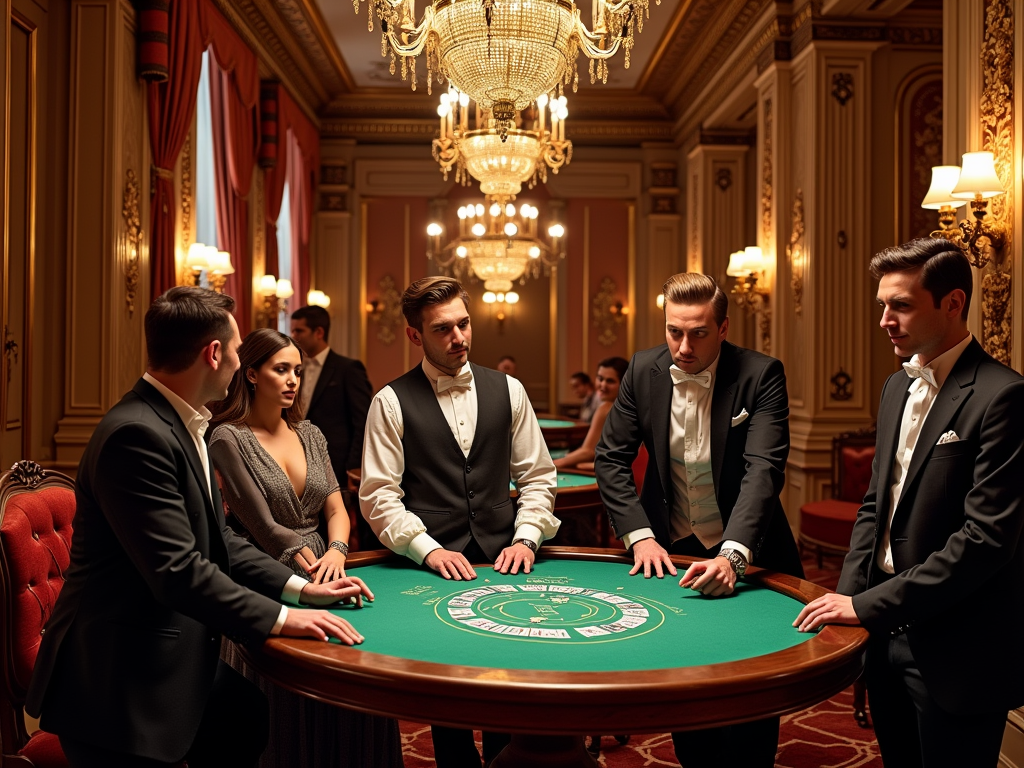The Evolution of Casino Gaming: From Ancient Dice to Digital Innovation
Casino gaming connects ancient traditions with modern digital entertainment, tracking a path from Egyptian dice games to today’s advanced online platforms. The 1638 opening of Venice’s Ridotto created the foundation for regulated casino operations, setting standards still relevant in current gaming establishments.
Key Takeaways
- Ancient gambling artifacts date back to 3000 BC, with dice games establishing the first organized betting systems.
- Venice’s Ridotto in 1638 initiated regulated casino gaming and created lasting industry benchmarks.
- Mathematical breakthroughs, including Basic Strategy in Blackjack and Thorp’s card counting system, transformed gaming strategies.
- Digital innovations starting in 1994 created new possibilities through online platforms and mobile access.
- Classic games such as roulette, baccarat, and slots maintain their essential appeal while adapting to modern technology.
I’ve observed how casino games blend timeless principles with cutting-edge technology. The transformation from physical dice to digital interfaces demonstrates the industry’s ability to evolve while preserving the fundamental excitement of gaming. Modern casinos now offer an expanded range of options, from traditional table games to innovative digital experiences, meeting diverse player preferences across multiple platforms.
From Ancient Dice to Modern Casinos: How Gambling Games Shaped History
Ancient civilizations left behind fascinating evidence of humanity’s enduring love for games of chance. Archaeologists discovered dice in Egyptian tombs dating back to 3000 BC, showing how deeply rooted gambling is in human culture. These early dice, carved from bone and ivory, paved the way for the sophisticated casino games we enjoy today.
Early Gambling Around the World
The Chinese were particularly innovative in developing gambling games, with records showing organized betting activities as early as 2300 BC. Their influence continues to shape modern gaming, especially in popular casino offerings like baccarat and its rich history.
The transformation from casual betting to structured gambling took a major leap forward in 1638 with the establishment of the Ridotto in Venice, widely recognized as the world’s first legal gambling house. This pioneering venue set standards that modern casinos still follow, including:
- Strict dress codes for patrons
- Fixed operating hours
- House-banked games
- Professional staff and security
- Regulated betting limits
The success of the Ridotto sparked a revolution in organized gambling, leading to the spread of similar establishments across Europe. Games evolved from simple dice throws and tile-based activities like Keno to more sophisticated options. Early versions of blackjack and its strategic elements started appearing in French casinos by the 18th century.
The progression from ancient games to modern casino offerings showcases remarkable innovation. While early gamblers used animal bones and sticks for games of chance, today’s players can choose from diverse online slot variations and countless table games.
Those primitive dice games played thousands of years ago laid the foundation for everything from modern roulette’s excitement to the strategic depths of poker mastery. This rich history shows how gambling games haven’t just entertained – they’ve shaped social interactions, mathematical understanding, and risk management concepts throughout human civilization.

The Rise of Roulette: Pascal’s Accidental Legacy
Some of the greatest inventions stem from unexpected discoveries, and roulette’s fascinating origin story perfectly illustrates this point. The game emerged as a byproduct of Blaise Pascal’s scientific pursuits in 1655. While attempting to create a perpetual motion machine, this brilliant mathematician inadvertently laid the foundation for what would become one of the most iconic casino games in history.
Evolution Through European Innovation
The modern version of roulette first appeared in Paris in 1796, featuring red and black numbered slots. But the real game-changing moment came in 1843 when François and Louis Blanc revolutionized roulette by introducing the single-zero wheel in Bad Homburg, Germany. This innovation reduced the house edge to 2.7%, making it significantly more appealing to players compared to earlier versions.
The Blanc brothers didn’t stop there. They established the Monte Carlo Casino, transforming it into Europe’s premier gambling destination. Their single-zero European roulette became the gold standard, though a different variant would later emerge across the Atlantic. American casinos added a double-zero slot, increasing the house edge to 5.26% – a modification that persists in many U.S. establishments today.
Impact on Modern Gaming Culture
The mathematical precision of roulette has made it a cornerstone of casino gaming. Here’s what makes it stand out:
- The European single-zero wheel offers better odds with its 2.7% house edge
- The American double-zero variant maintains a higher 5.26% house edge
- The wheel’s precise engineering ensures completely random results
- The game combines probability theory with straightforward gameplay
- Players can choose from simple or complex betting strategies
This blend of sophistication and simplicity has kept roulette relevant through centuries. From its accidental invention by Pascal to its refinement by the Blanc brothers, roulette has proven that sometimes the best creations aren’t planned at all. The game continues to captivate players at both physical and digital tables, maintaining its position as a symbol of casino entertainment.

From Twenty-One to Basic Strategy: Blackjack’s Evolution
Blackjack’s rich history stretches back to 18th century France, where it was known as ‘Vingt-et-Un’ (Twenty-One). The game’s modern name emerged from a special promotion in American gambling houses – players would receive a generous 10-to-1 payout if they held an Ace of Spades with either the Jack of Spades or Jack of Clubs.
The Science Behind the Cards
I’ve found that the most significant breakthrough in mastering blackjack strategy came in 1956. Four mathematicians – Baldwin, Cantey, Maisel, and McDermott – created what we now call Basic Strategy, forever changing how players approach the game. Their groundbreaking work, published in the Journal of the American Statistical Association, used early computers to analyze millions of possible hand combinations.
The next revolutionary development arrived in 1962 when mathematician Edward Thorp published “Beat the Dealer.” This game-changing book introduced card counting to the public, proving that players could gain a mathematical advantage over the casino. Thorp’s work showed that by tracking the ratio of high to low cards remaining in the deck, skilled players could adjust their bets accordingly.
These developments pushed casinos to adapt their games. Here’s how they responded to protect their edge:
- Introduced multiple deck games to make card counting more challenging
- Implemented continuous shuffle machines in many venues
- Added rules variations to maintain house advantage
- Changed deck penetration before reshuffling
With optimal basic strategy, players can reduce the house edge to less than 0.5%, making blackjack one of the most player-friendly casino games available. This mathematical advantage has helped maintain blackjack’s popularity, as skilled players know they’re facing some of the best odds in the casino.
The game’s evolution continues today, with variations like Spanish 21, Double Exposure, and Progressive Blackjack adding fresh excitement to this classic card game. While these variants might offer exciting new side bets and rules, they often come with a higher house edge than traditional blackjack.
The Digital Revolution Reshapes Casino Gaming
The casino industry experienced a seismic shift in 1994 when Microgaming launched the first-ever online casino software. This breakthrough moment created a ripple effect across the gambling sector, setting the stage for a digital transformation that would make casino games accessible at your fingertips.
Pioneering Online Gaming Milestones
A significant milestone arrived in 1996 when InterCasino accepted the first real-money wager online, marking the birth of digital gambling as we know it today. The implementation of Random Number Generator (RNG) auditing brought much-needed transparency and fairness to online gaming. These technological advances laid the foundation for trusted gaming experiences, with independent testing agencies ensuring fair play across all digital platforms.
Modern Gaming Evolution
The introduction of live dealer games bridged the gap between traditional and online casinos, creating an immersive experience where players can enjoy authentic blackjack action and other table games with real dealers. This innovation helped build trust and added a social element to digital gaming.
The mobile gaming revolution has transformed how players access their favorite games. Here’s how the digital landscape has evolved:
- Seamless cross-platform gaming between desktop and mobile devices
- Advanced security features protecting player data and transactions
- Integration of cryptocurrency payment options
- Real-time multiplayer capabilities
- HD streaming for live dealer games
- Instant play options without downloads
The remarkable growth of online gambling speaks volumes about its popularity, with the global market reaching USD 63.53 billion in 2022. This expansion has encouraged game developers to create innovative titles, from engaging online slots to sophisticated poker platforms.
The digital revolution hasn’t just changed how we access casino games – it’s created new opportunities for players to learn and practice their skills. From detailed game guides to practice modes, technology has made casino gaming more approachable and enjoyable for players of all experience levels.

Slot Machines: From Liberty Bell to Digital Jackpots
The Mechanical Marvel Begins
The story of slot machines and their evolution started in a humble San Francisco workshop. In 1895, Charles Fey created the Liberty Bell, the first automatic payout slot machine. This groundbreaking invention featured three spinning reels decorated with symbols like horseshoes, diamonds, spades, hearts, and the Liberty Bell – which could award the highest payout of 50 cents.
Fey’s creation sparked a gambling revolution. The Liberty Bell’s straightforward mechanism of pulling a lever to spin three reels set the foundation for all future slot machines. Its success led to numerous copycats, but Fey’s original design remained the gold standard for mechanical slots for decades.
The Electronic Revolution
The gambling industry took a giant leap forward in 1963 when Bally Technologies introduced Money Honey, the first electromechanical slot machine. This innovative device still needed a lever pull to start (a feature players loved), but its inner workings were completely electronic. Money Honey could handle automatic payouts up to 500 coins without attendant assistance.
1976 marked another milestone when the Fortune Coin Company launched the first true video slot machine. Initially installed at the Las Vegas Hilton, these machines replaced physical reels with a display screen. Though players were skeptical at first, video slots soon gained popularity and paved the way for modern digital gaming.
The introduction of progressive jackpots transformed the slot machine landscape. Here’s how progressive slots changed the game:
- They linked multiple machines across different casinos
- Each bet contributed to a growing jackpot pool
- Potential winnings grew to life-changing amounts
- Players could track jackpot sizes in real-time
This innovation led to the famous Megabucks system, which produced one of the most remarkable wins in slot machine history. In 2003, a player at the Excalibur Casino in Las Vegas won an astounding $39.7 million, setting a record that proved slots could create instant millionaires.
The path from Fey’s mechanical Liberty Bell to today’s digital casino entertainment shows incredible technological progress. Modern slots offer immersive experiences with high-definition graphics, engaging bonus rounds, and multiple paylines – while still maintaining the simple thrill of the spin that made the original Liberty Bell so appealing.

The Noble Game of Baccarat
The noble game of baccarat carries a rich heritage dating back to the 15th century in Italy, where it was first known as ‘baccara’. This elegant card game’s journey from Italian salons to modern casinos is filled with aristocratic charm and mathematical precision.
French nobility quickly embraced baccarat, making it their preferred gambling entertainment in the grand salons of Paris. The game’s simple yet sophisticated rules attracted aristocrats who appreciated both its social aspects and strategic elements. This royal connection helped cement baccarat’s status as a high-stakes affair, a reputation that still influences its perception today.
Evolution and Modern Variations
A significant transformation occurred in the 1950s when the Punto Banco variation emerged in Havana, Cuba. This version simplified the game while maintaining its elegant appeal, becoming the standard in most modern casino gaming establishments. The mathematics behind baccarat reveals its fairness — the banker bet offers a house edge of just 1.06%, while the player bet sits at 1.24%, making it one of the most player-friendly table games.
The introduction of mini-baccarat marked another crucial development in the game’s history. This variation maintains the same rules but features lower minimum bets, making it accessible to casual players while preserving the game’s sophisticated atmosphere.
Here’s what makes baccarat stand out in modern casinos:
- Lower minimum bets in mini-baccarat opened the game to broader audiences
- Simplified dealing procedures speed up gameplay
- Private high-limit rooms still cater to traditional high-rollers
- Electronic versions provide even more accessibility
- Multiple side bet options add extra excitement
Despite its evolution into more accessible formats, baccarat maintains its association with luxury and high-stakes gambling. Many casinos still feature exclusive baccarat rooms where high-rollers can enjoy the game in its traditional format with elevated betting limits and premium service levels.
The game’s enduring popularity across different playing formats shows how baccarat has successfully adapted to changing times while maintaining its core appeal. Whether played in its traditional high-stakes format or the more accessible mini-baccarat version, this noble game continues to attract players seeking a blend of simplicity, strategy, and sophistication.

Sources:
Schwartz, David G. – Roll the Bones: The History of Gambling
Thorp, Edward O. – Beat the Dealer: A Winning Strategy for the Game of Twenty-One
Casino.org – Various historical articles on specific games
Wikipedia – Entries on specific games and related figures/events
Statista / Grand View Research – Data on online gambling market size
Journal of the American Statistical Association – “The Optimum Strategy in Blackjack” (Baldwin et al., 1956)





